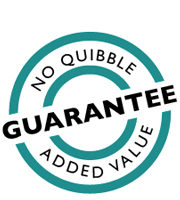Enterprise Investment Scheme (EIS)

The Enterprise Investment Scheme (EIS) and its new cousin, the Seed Enterprise Investment Scheme, (SEIS) provide business angels with a number of powerful incentives to invest in small unquoted companies. Learn more about the Seed Enterprise Investment Scheme (SEIS) for start-ups and early stage companies.
There are currently five EIS tax reliefs available. These are:
- Income tax relief – Provided an EIS qualifying investment is held for at least three years, an investor can reduce his or her income tax liability by 30% of the amount invested in the tax year in which the investment is made. This means the effective cost of investing £10,000 in an EIS qualifying company is reduced by £3,000 to only £7,000. The income tax relief can also be carried back to the previous tax year. The minimum investment is £500 per company and the maximum is £1m per annum per investor. Furthermore, any investor who has not used his or her EIS entitlement in the previous tax year can invest up to £1m in EIS qualifying shares in the current tax year and treat £1m as having being invested in the previous year. If, however, an investor were to dispose of the shares within three years, the 30% income tax relief is withdrawn and must be repaid to HMRC unless the disposal is to a spouse or civil partner. From 2018-19, the annual limit is doubled to £2m provided any amount above £1m is invested in at least one ‘knowledge intensive’ company.
- Capital gains tax relief – Provided an EIS qualifying investment is held for at least three years, there is no capital gains tax payable on disposal provided the EIS income tax relief was given and not withdrawn on those shares.
- Capital gains tax deferral relief – In the event that an investor disposes of EIS qualifying shares after holding them for less than three years, any capital gains tax liability can be deferred indefinitely provided the disposal proceeds are reinvested in new shares in another EIS qualifying company. The reinvestment must take place between one year before or up to three years after the disposal. Deferral relief is unlimited.
- Loss relief – If EIS qualifying shares are disposed of at any time at a loss (after taking into account the income tax relief), such a loss can be offset against the investor’s capital gains or income in either the year of disposal or the previous tax year.
- Inheritance tax exemption – EIS investments are usually exempt from inheritance tax providing the deceased investor held the shares for at least two years.
To qualify, any equity investor cannot be ‘connected’ with the EIS qualifying company. This means the investor cannot:
- Be remunerated as a company employee, partner, or director
- Directly or indirectly possess or is be entitled to acquire more than 30% of the ordinary share capital, or 30% of voting rights, or 30% of the loan capital plus issued ordinary share capital (on the basis of nominal values, not amounts subscribed or market values) of the company or any subsidiary;
between the period commencing two years before the issue of EIS shares, and the later of three years after the investment was made and the date the company commences trading.
To qualify for EIS, a company must satisfy a number of criteria. These are:
- Issue new shares.
- Operate as a trading company. Most companies are eligible for EIS, although there are a few exceptions. These exceptions include companies that operate in property development, farming and market gardening, coal and steel production, hotel & nursing home operation & management, and many financial activities. HMRC’s website has the complete list.
- Be an unquoted at the time EIS qualifying shares are issued. This means the company cannot be listed on the London Stock Exchange or any other recognised stock exchange. Under the EIS rules, the Alternative Investment Market (AIM) and thePLUSQuoted andPLUSTraded Markets are not treated as recognised markets under EIS rules.
- Be a small company with gross assets of less than £15m before the issue of the EIS qualifying share issues, and or £16m immediately after the issue.
- Employs less than 250 full-time employees at the time of the EIS qualifying shares are issued.
- Carry out the trade for which the funds are raised for at least four months before an investor is eligible for the EIS reliefs.
Companies that qualify for EIS must observe the rules not just at the time of the investment but for at least three years thereafter. If it fails to do so, any reliefs will be withdrawn. A company will also lose its EIS qualifying status in the event that it loses control to another company.
 Enterprise Investment Scheme
Enterprise Investment SchemeFor further information, download HMRC’s introduction to the Enterprise Investment Scheme. Download here (PDF, 99KB).
To discuss your business critical issue
Please call Paul New on 020 8390 9972 or 07790 501225 or send a message.







